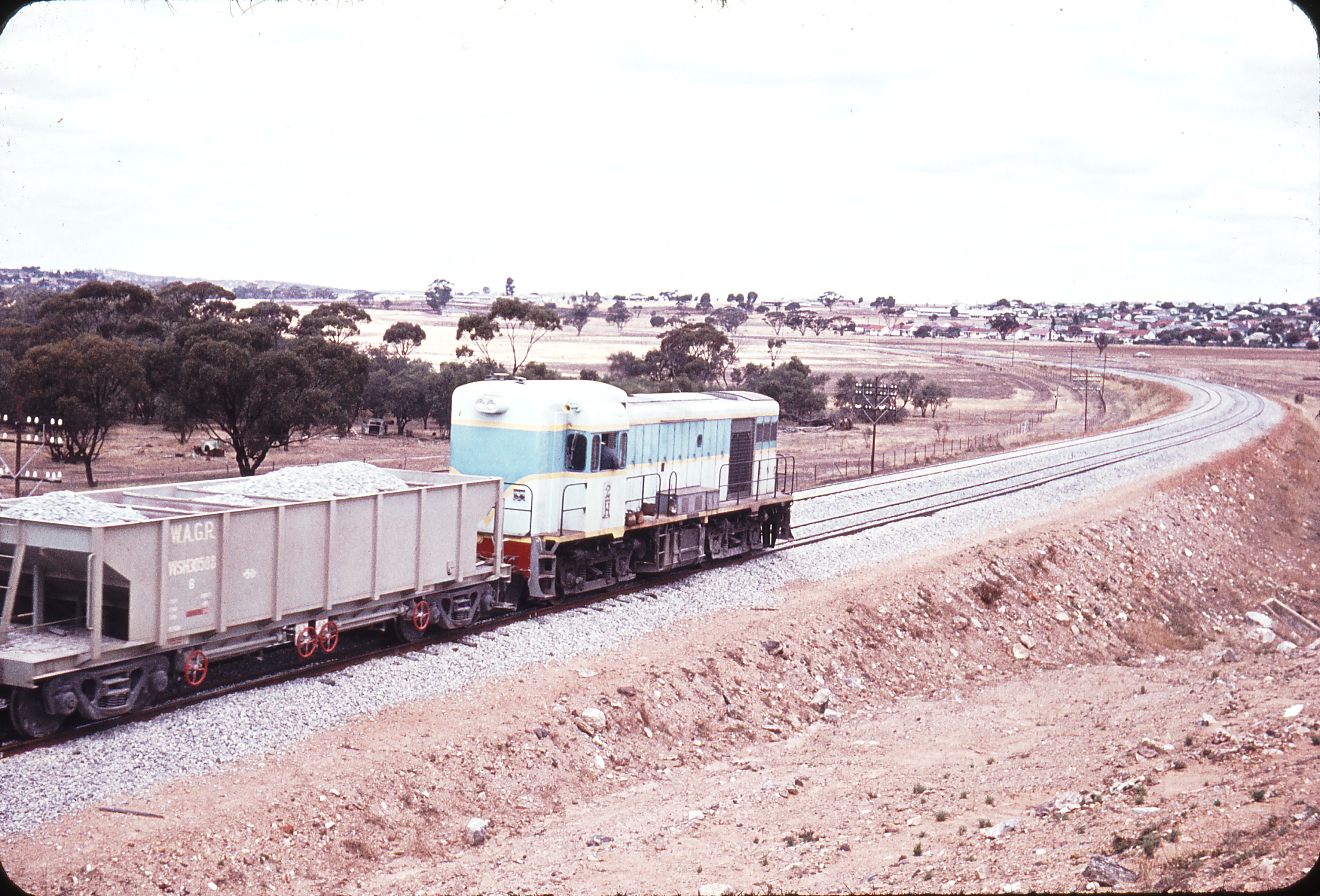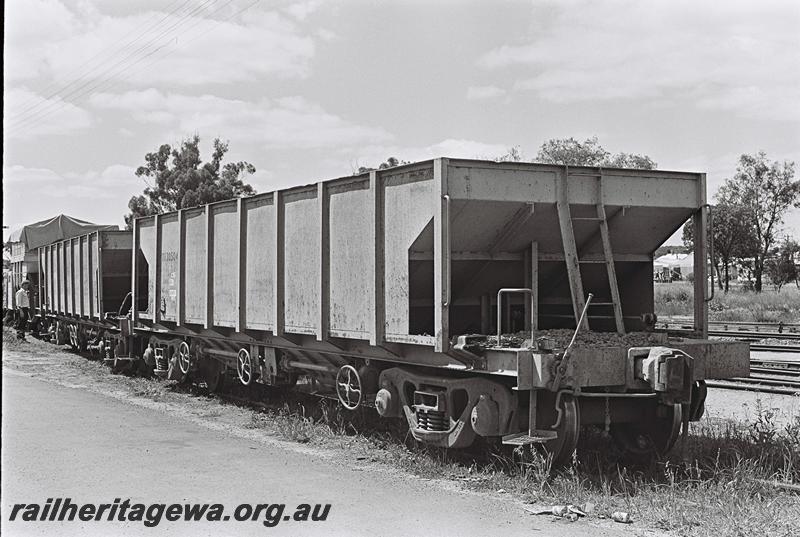 |
| Unpainted test model of WSH ballast hopper in HO scale. Added details from brass wire, etc. |
In 1970, 15 of the wagons were converted to narrow gauge and reclassified as XM, and are still in use in WA on the narrow gauge system.
In 1975/6, all of the remaining 30 WSH's were sold to Commonwealth Railways (later Australian National) and reclassified as AHVY.
From around 1987, most of the AHVY wagons were transferred to Tasmania, converted to narrow gauge and reclassified ZI, later being fitted with extended sides and roof and becoming class HD.
 |
| Unpainted test model of XM ballast hopper in Sn3½ scale. (No added details at this stage.) |
There are quite a few photos of WSM's on the Weston Langford site (The link provided should search for "ballast" in Western Australia.)
 |
| Photo of WSH in almost pristine condition at work on construction of the WAGR standard gauge project in November 1965. (From Weston Langford collection) |
The Marbelup Models "kit" for the WSH/XM consists of a one-piece 3D-printed body. Some cleanup will probably be required to remove the support structures which are required during the 3D printing process. Typically, this takes about 30 minutes. The purchaser must also obtain, separately, bogies, couplers, fixing screws, brass wire (for details such as handrails), paint and decals. Styrene strip is also required for the braces across the top of the hopper.
For more information, please refer to the assembly tips.
 |
| Close-up of WSH model showing added details (HO scale) |
 |
| XM model in Sn3½ scale with 3D-printed bogies. |
 |
| Rail Heritage WA photo of XM hoppers, showing they didn't always operate as a solid consist. |
The "special" bogies are not required for the Tasmanian ZI version, as conventional narrow gauge bogies were used and the wagons were "lowered" to match the coupler height of other narrow gauge wagons.
Back to Marbelup Models Home Page